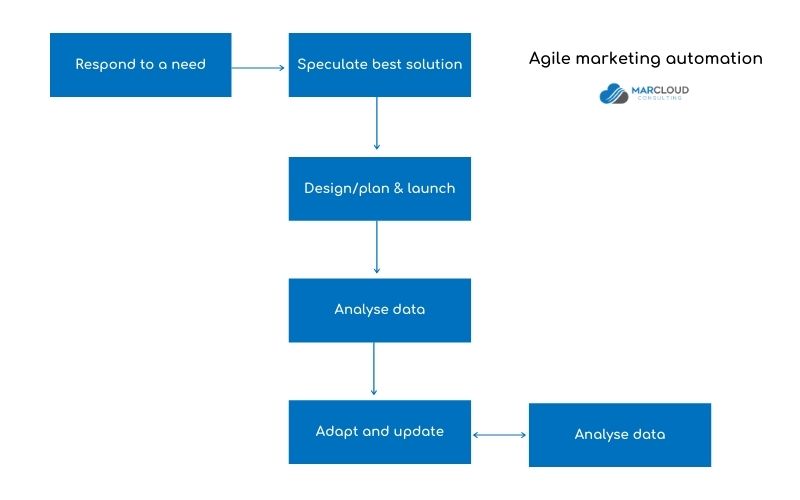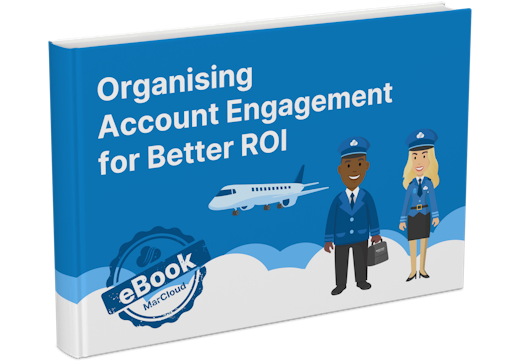This blog was written before Pardot was renamed to Marketing Cloud Account Engagement. You can read more about the name change and what it means here.
Finding marketing automation services can be an overwhelming task. As automation software continues to become a necessity, not a luxury, there are plenty of new providers cropping up to help businesses make the most out of their technology investment.
For marketers looking for expert automation assistance, the options include freelance consultants, marketing agencies that specialise in a variety of automation platforms, and platform-specific agencies.
For example, at MarCloud we work only with Pardot and, as an extension of this, Salesforce.
Other agencies and marketing consultants, however, might offer services across a range of leading automation platforms.
These nuances between service providers, along with factors such as their portfolio, testimonials, and pricing structure, might be enough to determine which is the right fit for a particular business.
When it comes to narrowing down the best marketing automation services though, I urge you to also consider the way that the provider operates.
By that, I mean their processes and approach to marketing with an automation tool, as well as the way they collaborate with clients to get the best result.
Why?
Because marketing automation should be agile.
What does agile marketing actually mean?
Agile marketing means always being in test mode.
Rather than spending months planning an automation campaign or email sequence that has to be perfect before it launches, we get to market quickly with a solution we believe to be the best it can be and then we analyse data, experiment and test to continually improve.
With traditional marketing that usually relies on media buying agencies, we’ve always been forced into submitting a final product and crossing our fingers that it does what it’s supposed to.
In the digital world, however, we have the ability to launch, learn and adjust as and when we desire. If a Campaign goes live and we don’t see the KPIs we estimated, we delve into the analytics and we make data-driven decisions.
This means our ability to connect with our potential customers and achieve the best results is much stronger.
Other methodologies for project management include the waterfall model - rolling out and completing phases one-by-one, and marking these as finished once they are done - and Hybrid, which is a combination of both agile and waterfall. There are plenty of others but these two are the most popular.
Example of waterfall methodology
Let’s say we are launching a landing page for a new product. The waterfall method of doing so would be to break this project into clear phases and move through each phase to complete the task. For example:
- Requirements
- Design
- Build
- Go live
- Maintenance
This is a typical way to approach short, straightforward projects but in the case of a landing page, is it the best? Not in my opinion.
Landing pages are not set-and-forget assets. We can know our audience inside out, design a fantastic page, and send it live feeling very confident that we’ve hit the nail on the head and leads will come pouring in but this might not be the case.
As we well know, the internet is constantly changing. Devices, algorithms and audience preferences affect how we communicate with our target customer.
Once a landing page is sent live, that’s not the end of the job. We may allocate a phase for Maintenance’ but this isn’t intended to improve results, just to keep the page live and running well for visitors.
So, is agile the best alternative?
Example of agile methodology
Using the same case as above, launching a landing page for a new product, the agile method looks like this:
- Respond to a need i.e. landing page to support a new product launch.
- Speculate the best landing page design.
- Design and launch the page.
- Collect data analytics and insights, perhaps using A/B testing.
- Adapt and update the page based on hard data.
- Collect data analytics and insights.
- Adapt and update the page based on hard data.
- Collect data… you get the point.

This way of working means we are consistently using the signals from our audience to make improvements to our marketing. In doing so, better communicating and delivering on goals and KPIs.
As a marketing automation expert, I fully believe the agile approach is the most effective for providing great marketing automation services.
For a client, the agile model also means a more collaborative way of working, using project management tools to share and provide feedback in real-time (my personal favourite is Asana).
It also means the budget isn’t spent on a single deliverable that might not make the grade. There’s always room in the project plan for improvement.
Of course, taking an agile approach to marketing automation is about more than launching landing pages.
How to apply agile working to Pardot automation
Campaign assets
Beyond landing pages, we have forms, CTA buttons, Engagement Studio sequences, subject lines, templates, and plenty more that we should always be testing, analysing and learning from to implement updates.
Scoring and grading
Our lead scoring and grading models may be planned upfront but there should always be room to adjust these once enough data has been gathered to see whether the scores and grades are effective.
I’ve certainly worked with businesses in the past who have spent hours setting up lead scoring in Pardot but found that the scores they were allocating weren’t true indicators of how sales-ready a lead was.
The agile method of working means anticipating and making time for these types of insights.
Prospects
Again, how we plan to segment and categorise our prospects should be planned upfront but on the understanding that our plan is a launching point and not the end of the project.
Our engagement metrics can show us where our segmentation may not be quite right, in which case we’ll want to pivot and update as needed, to ensure the best result.
What does this mean when choosing an automation service?
When speaking with potential agency or consultant partners, be sure to ask questions about their approach to projects. Is it a structured waterfall approach of moving from phase to phase to deliver a project that ends at go-live?
Or is it an agile approach that leaves room for experimentation, data analysis and improvements based on sound data?
The former might be fine for small, one-off projects but in most cases, when it comes to truly getting the most out of a marketing automation software, agile is the way to work.
For more information about MarCloud marketing automation services and how we go about things, feel free to get in touch!

Tom Ryan
Founder & CEO of MarCloud, Tom has been on both sides of the fence, client-side and agency, working with Salesforce platforms for the best part of a decade. He's a Salesforce Marketing Champion and certified consultant who loves to co-host webinars and pen original guides and articles. A regular contributor to online business and marketing publications, he's passionate about marketing automation and, along with the team, is rapidly making MarCloud the go-to place for Marketing Cloud and Salesforce expertise. He unapologetically uses the terms Pardot, Account Engagement and MCAE interchangeably.
More by Tom RyanFeatured resource

Organising Pardot for Better ROI
Tidying your Pardot account is step one in making your life easier, saving time and increasing return on marketing investment! Here you’ll find a complete guide to organising your Pardot account like a pro – whether you’re working with a new implementation or a mature account that’s in a bit of a mess.
Download now


